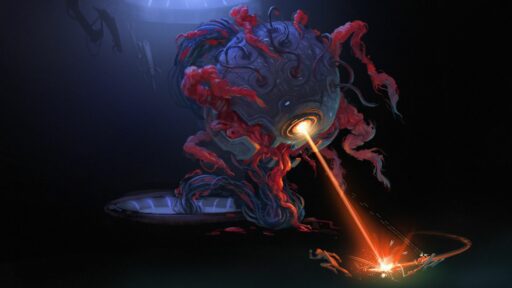As we delve into the world of sandbox games, we uncover a unique blend of creativity, collaboration, and innovation that has revolutionized the gaming industry. Sandbox games provide players with a canvas to express their imagination, build complex structures, and share their creations with a global community. This article explores the rise of sandbox games, examining their evolution, societal impact, and future potential within the digital landscape.
Key Takeaways
- Sandbox games have evolved from simple pixelated adventures to complex platforms for creativity, reflecting the growth of user-generated content and its influence on game design.
- These games foster creativity and collaboration, offering educational benefits and opportunities for community building within virtual learning environments.
- Virtual real estate in sandbox games has economic and social implications, with monetization, trade, and brand partnerships creating a burgeoning sandbox economy.
- The intersection of gaming and blockchain technology, such as Web3, is empowering players through decentralization, tokenization, and significant rewards like 1 million SAND.
- The future of sandbox gaming is poised to be shaped by emerging technologies, expanding virtual universes, and a deeper focus on narrative and emotional player engagement.
The Evolution of Gaming and the Emergence of Sandbox Worlds

From Pixelated Adventures to Complex Creations
The gaming landscape has undergone a remarkable transformation, evolving from simple pixelated adventures to sophisticated sandbox worlds where creativity reigns supreme. This shift has not only changed how games are played but also how they are perceived, with players now stepping into roles that transcend traditional gameplay.
- Early games focused on linear storytelling and limited player interaction.
- Modern sandbox games offer open-ended environments for creation and exploration.
- The transition to complex creations has been driven by technological advancements and player demand for deeper engagement.
The Sandbox’s initiative is a testament to the evolution of gaming, celebrating the collective power of imagination and the joy of crafting one’s own narrative within these expansive digital realms.
As we delve deeper into the intricacies of sandbox games, it becomes clear that they are more than just games; they are platforms for innovation, collaboration, and education. The Sandbox, for instance, merges the thrill of adventure with the satisfaction of building and sharing, creating a unique blend of entertainment and creativity.
The Role of The Sandbox in Gaming History
The Sandbox has emerged as a pivotal platform in the evolution of gaming, transforming the landscape from linear, scripted experiences to vast realms of player-driven innovation. This shift has not only changed how games are played but also how they are created, with The Sandbox at the forefront of this revolution.
- The Sandbox’s initiative is a celebration of creativity and collective imagination.
- It provides a decentralized platform for creating and monetizing immersive 3D worlds.
- Partnerships with major brands have propelled The Sandbox into a leading position in the virtual world space.
The Sandbox’s influence extends beyond entertainment, shaping a new digital economy where creativity is the currency.
With over 40 million global installs on mobile, The Sandbox’s metaverse is a testament to its significant role in gaming history. It stands as a beacon for user-generated content, empowering players and creators alike to explore, build, and share their unique visions within a digital universe.
The Impact of User-Generated Content on Game Design
The proliferation of user-generated content (UGC) has revolutionized game design, shifting the focus from developer-driven narratives to player-centric experiences. Game designers now often provide tools and platforms for creativity, allowing players to build, share, and modify content within the game’s ecosystem. This democratization of content creation has led to a surge in innovation and diversity within games.
The collaboration between educators, game designers, and UX designers is crucial in crafting virtual worlds that are not only immersive but also educational and inclusive. By integrating UGC, these worlds become dynamic spaces that adapt and evolve with the contributions of their communities. The table below illustrates the roles and contributions in the development of UGC-driven games:
| Role | Contribution |
|---|---|
| Game Designers | Create immersive worlds |
| UX Designers | Ensure accessibility |
| Educators | Balance educational content |
The synergy of multidisciplinary teams enhances the educational potential of games, fostering environments where learning is an engaging, interactive experience.
As the landscape of gaming continues to evolve, the importance of UGC cannot be overstated. It not only enriches the gaming experience but also empowers players to leave their mark on the virtual worlds they inhabit, creating a sense of ownership and community.
Fostering Creativity and Collaboration in Sandbox Games

The Sandbox’s Builder’s Challenge: Rewarding Innovation
The Sandbox has launched an ambitious initiative to foster innovation within its virtual world. The Builders’ Challenge is ON: Publish, Engage, Earn – this mantra encapsulates the essence of The Sandbox’s approach to rewarding creativity. As creators embark on their journey, they can expect to be recognized and rewarded for their efforts, with the weekly distribution of SAND tokens serving as a tangible measure of their success.
The initiative is not just about the rewards; it’s a testament to the evolution of gaming. From simple pixelated adventures to complex creations, The Sandbox’s Builder’s Challenge represents a culmination of this journey, celebrating the collective imagination of its community.
The Sandbox’s Builder’s Challenge is a bold initiative, rewarding creators with 1 million SAND for crafting immersive experiences within its metaverse.
Creators are not only incentivized to build but also to earn from their unique experiences. This opens up opportunities for new talent to rise and shine in The Sandbox’s virtual world, which has already seen more than 40 million global installs on mobile. It’s a decentralized platform that empowers creators to safely store, trade, and monetize their creations.
Collaborative Efforts and Community Building
Sandbox games have become a nexus for collaborative efforts and community building, transforming the way players interact within virtual worlds. These games offer a unique platform where players can come together to create, share, and experience content in ways that were previously unimaginable. The essence of a sandbox game lies in its ability to foster a sense of community among its players, encouraging them to work together to achieve common goals.
The collaborative nature of sandbox games is not just about building and creating; it’s about fostering a culture of shared experiences and mutual growth.
Collaborative skills such as effective communication, joint planning, and resource sharing are crucial in these environments. Players often engage in interdisciplinary projects, drawing on diverse skills and knowledge to achieve innovative solutions. This not only enhances creativity and technical skills but also develops social competencies like empathy and perspective-taking.
- Encourages continuous dialogue and idea sharing
- Promotes cooperative learning and collective intelligence
- Develops interdisciplinary knowledge and integration of diverse skills
The impact of such collaboration extends beyond the game itself, preparing players for real-world interactions and problem-solving. Sandbox games, therefore, are not just a source of entertainment but a tool for developing essential life skills.
Educational Potential of Sandbox Games in Learning Environments
Sandbox games have revolutionized the way educators approach teaching and learning. These interactive platforms serve as fertile ground for cultivating a range of skills, from critical thinking to creative problem-solving. The open-ended nature of sandbox games aligns perfectly with educational philosophies that emphasize learner agency and exploratory learning.
- Sandbox games encourage exploration and experimentation, allowing students to learn through trial and error in a risk-free environment.
- They promote collaboration among peers, as many sandbox games offer multiplayer options where teamwork is essential.
- The games can be used to simulate real-world scenarios, providing a practical context for abstract concepts.
- They offer opportunities for customization and personalization, which can help students take ownership of their learning experience.
Sandbox environments are not just about playing; they’re about learning in a way that is engaging, interactive, and deeply personal. They provide a canvas where the theoretical can be made tangible, and the complex can be visualized in simple, yet profound ways.
The educational potential of sandbox games is not limited to the hard sciences. They also offer a unique avenue for teaching soft skills such as communication, collaboration, and empathy. By simulating real-life scenarios, these games prepare students for the challenges of the modern workplace, where such skills are increasingly valued.
The Economic and Social Implications of Virtual Real Estate

The Rise of Virtual Land Ownership
The concept of virtual land ownership has transformed the landscape of gaming, introducing a new dimension where players can become landowners within digital realms. By acquiring a piece of land, often represented as a Non-Fungible Token (NFT), individuals gain not only a virtual asset but also the rights to build, create, and monetize their digital space.
The Sawasdee, Thaiverse LAND Sale is a prime example of this phenomenon, offering parcels of land in a virtual Thailand for players to own and develop. This initiative underscores the potential for virtual real estate to foster creativity and community engagement in a shared digital environment.
The allure of virtual land ownership lies in its ability to grant creative control and a sense of permanence in the ever-evolving digital landscape.
As the metaverse continues to expand, the implications of owning virtual property extend beyond mere gameplay. It signifies a shift towards a more democratic and decentralized model of gaming, where players have tangible stakes in the worlds they inhabit.
Monetization and Trade in the Sandbox Economy
The Sandbox platform has revolutionized the way digital assets are created, stored, and monetized. Within this virtual economy, users can engage in the trading and monetization of their creations, fostering a vibrant marketplace. The decentralized nature of the platform ensures that creators retain control over their assets and can benefit directly from their work.
The economic activity within The Sandbox is not limited to the exchange of virtual goods. The platform has seen a significant uptick in non-LAND transactions, indicating a robust and growing ecosystem. Here’s a snapshot of the recent activity:
| Metric | Q4 2022 | Q4 2023 | % Change |
|---|---|---|---|
| Daily Non-LAND Buyers | X | X+73% | +73% |
| Non-LAND Mints | X | X+233% | +233% |
| Daily Non-LAND Sales | X | X+173% | +173% |
| Daily Non-LAND Volume | X | X+78% | +78% |
The Sandbox’s economic model is a testament to the potential of virtual economies to mirror and even surpass the dynamism of real-world markets.
With the introduction of new partnerships and collaborations, The Sandbox continues to expand its reach, bringing in luxury brands and music groups to create unique digital experiences. This not only diversifies the marketplace but also introduces new avenues for monetization and trade.
Partnerships and Brand Involvement in Virtual Worlds
The metaverse has become a new frontier for brand engagement, with companies seeking to capitalize on the unique opportunities presented by virtual real estate. Brands are now creating immersive experiences that go beyond traditional advertising, aiming to build deeper connections with their audiences. These experiences range from virtual storefronts to interactive events, all designed to enhance the consumer’s journey in the digital realm.
The collaboration between PR teams, designers, and developers is crucial in shaping these virtual worlds to align with brand identity and values. The table below illustrates some of the key areas where brands are focusing their efforts in the metaverse:
| Area of Focus | Description |
|---|---|
| Virtual Storefronts | Establishing a brand presence with digital shops. |
| Interactive Events | Hosting events that engage consumers in real-time. |
| Digital Merchandise | Offering exclusive virtual goods for avatars. |
| Social Spaces | Creating areas for community interaction and networking. |
The potential for brands in virtual worlds is vast, with the ability to reach global audiences and provide them with unique, memorable experiences. This not only serves as a powerful marketing tool but also opens up new revenue streams through the sale of virtual goods and services.
As virtual worlds continue to evolve, the role of brands is expected to expand, with partnerships becoming increasingly sophisticated. The integration of brand narratives into the fabric of these digital landscapes is a testament to the transformative power of virtual real estate in the realm of marketing and consumer engagement.
The Intersection of Gaming and Blockchain Technology

Understanding Web3 and Its Impact on Gaming
The integration of blockchain technology into the gaming industry marks the dawn of Web3 gaming, a transformative movement that redefines player autonomy and asset ownership. Unlike traditional gaming environments, where progress is confined to a single platform, Web3 gaming leverages cryptocurrencies and NFTs to facilitate a decentralized, player-driven ecosystem.
This journey through the realms of Web3 gaming only scratches the surface of its potential to revolutionize how we play, create, and interact within digital worlds.
The implications of this shift are profound, offering gamers the ability to truly own, sell, or trade their digital assets as they would with tangible collectibles. The concept of play-to-earn further exemplifies the economic empowerment Web3 gaming provides, allowing players to reap real-world value from their in-game achievements.
Here are some key features of Web3 gaming:
- True ownership of in-game assets
- Decentralized gaming ecosystems
- Play-to-earn models
- Enhanced player agency and control
As we explore the vast possibilities of Web3 gaming, we are not just witnessing a change in how games are played, but also in how they are perceived as a medium for creativity, investment, and community building.
Decentralization and Player Empowerment
The advent of Web3 gaming has brought about a significant shift in the power dynamics of the digital world. Decentralization ensures that control is distributed among the players rather than a centralized authority. This not only enhances the gaming experience by making it more resistant to censorship and outages but also imbues players with a sense of ownership and responsibility.
In the realm of sandbox games, decentralization means that players are not just passive recipients of a story but active participants shaping the tale through their choices and actions.
Community governance is another cornerstone of player empowerment. By holding governance tokens, players gain a voice in the game’s evolution, akin to being part of the development team. This collaborative approach to game design and decision-making fosters a deeper connection between the game and its community.
The table below outlines key aspects of decentralization in gaming:
| Feature | Description |
|---|---|
| Smart Contracts | Automatically enforce game rules and transactions. |
| DAOs | Enable collective decision-making and game governance. |
| Transparency | Provides a secure and fair gaming environment. |
| Interoperability | Allows assets to be used across multiple platforms. |
Tokenization and Rewards: The Case of 1 Million SAND
The Sandbox has taken a significant leap in the realm of tokenization and rewards by launching a Builder’s Challenge that awards 1 million SAND to creators. This initiative not only incentivizes the creation of unique and engaging content but also showcases the potential of digital currencies in fostering a vibrant creator economy within the gaming space.
A recent surge in the market cap of SAND, as reported by Messari, underscores the growing interest and confidence in The Sandbox’s ecosystem. The increase to $1.2 billion from $649 million is a testament to the platform’s success and the appeal of its reward system.
The Sandbox’s approach to rewards exemplifies the transformative power of tokenization in gaming. By offering substantial incentives, it encourages a new wave of digital creativity and entrepreneurship.
The integration of NFTs and native tokens like SAND into gaming platforms is not just a trend but a strategic move towards long-term sustainability and community engagement. Games built on The Sandbox are part of a broader ecosystem that benefits from the liquidity and utility of the SAND token.
The Future of Sandbox Gaming: Trends and Predictions

Emerging Technologies and Their Role in Sandbox Games
As the digital landscape continues to evolve, emerging technologies are shaping the future of sandbox games in profound ways. Virtual reality (VR) and artificial intelligence (AI) are at the forefront, offering immersive experiences and dynamic worlds that respond to player actions. The integration of these technologies promises to deepen the level of interaction and realism within sandbox environments.
Sandbox games are becoming increasingly sophisticated, with advancements in technology enabling more complex and engaging player experiences.
The potential of blockchain technology in gaming, particularly in sandbox games, is also significant. It offers a new dimension of gameplay through digital ownership and decentralized economies. Here’s a glimpse into how these technologies are influencing the sandbox gaming space:
- Virtual Reality (VR): Enhancing immersion with 3D environments.
- Artificial Intelligence (AI): Creating smarter, adaptive game worlds.
- Blockchain: Facilitating secure, transparent in-game transactions.
- Cryptocurrencies: Enabling new forms of in-game economies.
- Metaverse Platforms: Connecting disparate virtual worlds into a cohesive universe.
The Sandbox’s initiative is a testament to the power of collective imagination and the role of technology in enhancing creative expression within gaming.
The Expanding Universe of The Sandbox and Its Competitors
The Sandbox has emerged as a pivotal player in the expanding universe of sandbox games, leveraging its vast array of partnerships and a strong community of creators. With over 40 million global installs, The Sandbox is not just a game but a platform for innovation and expression.
Competitors are not far behind, with entities like Roblox and Meta’s ventures striving to create their own mark in the virtual space. However, The Sandbox’s approach to collaboration with brands, artists, and musicians has set a distinct tone for its metaverse experience.
The Sandbox’s initiative feels like a culmination of this journey. It’s a celebration of creativity, a recognition of the power of collective imagination.
The global reach of The Sandbox is evident in its 12 offices worldwide, including major hubs in Paris, Latin America, Hong Kong, Tokyo, and Seoul. This international presence underscores the platform’s ambition to be a leader in the metaverse space, offering a decentralized and intuitive environment for users to create, trade, and monetize their creations.
The Role of Narrative and Emotion in Player Engagement
Narratives in sandbox games serve as more than just a backdrop; they are the lifeblood that drives player engagement and emotional investment. Games with compelling narratives and well-developed characters can create emotional connections that resonate with players long after they’ve finished playing. These story-driven experiences often encourage players to step into the shoes of characters, embodying roles that differ from their real-life personas, thus enhancing the immersive experience.
The essence of these interactions is the immersive experience that comes from engaging with the narrative, other characters, and the world itself.
The role of emotion in gaming cannot be understated. It is the emotional journey, facilitated by the narrative, that often defines the success of a game. Players make decisions that influence the outcome of events, engage in dialogues that reveal more about the plot and characters, and undertake missions that are integral to the storyline. This interactive narrative is not just passively consumed but is actively shaped by the players’ choices, leading to a more personalized and impactful experience.
- Interactive Narrative: Evolves based on player actions and decisions.
- Narrative Immersion: Captivates and makes learning engaging.
- Motivation Through Quests: Provides clear objectives and purpose.
- Character-Driven Scenarios: Promotes engagement and represents complex concepts.
Conclusion
As we reflect on the transformative journey of gaming, from its pixelated origins to the vast, creative realms of sandbox games, it’s clear that this genre has redefined the landscape of play. The Sandbox, with its commitment to empowering creators and fostering a collaborative community, exemplifies the pinnacle of this evolution. By offering a platform where imagination can run wild and partnerships flourish, sandbox games like The Sandbox are not just games—they are canvases for innovation, storytelling, and shared experiences. As we look to the future, the rise of sandbox games signals a new chapter in gaming history, one where the barriers between creators, players, and developers continue to blur, giving rise to a world of endless possibilities and boundless creativity.
Frequently Asked Questions
What is The Sandbox and how does it contribute to the evolution of gaming?
The Sandbox is a decentralized virtual world that offers players and creators a platform to create immersive 3D worlds and game experiences. It represents the evolution of gaming from simple pixelated adventures to complex creations, emphasizing user creativity and collective imagination.
How do sandbox games like The Sandbox impact education and learning?
Sandbox games like The Sandbox have educational potential by teaching game-based learning and 21st-century competencies. They foster creativity, strategic thinking, and collaboration, which are valuable skills in learning environments.
What is the Builder’s Challenge in The Sandbox, and what does it reward?
The Sandbox’s Builder’s Challenge is an initiative that rewards creators with 1 million SAND for crafting immersive experiences within its metaverse. It encourages creators to build innovative and captivating worlds and stories.
How does virtual real estate work in The Sandbox, and what are its implications?
In The Sandbox, virtual real estate involves owning and trading digital land within the metaverse. This concept has economic implications, such as monetization opportunities, and social implications, such as partnerships with major brands and community building.
What role does blockchain technology play in The Sandbox?
Blockchain technology in The Sandbox enables decentralization and player empowerment. It provides a secure way to store, trade, and monetize creations, and underpins features like tokenization and rewards, exemplified by the 1 million SAND challenge.
What are the future trends and predictions for sandbox games like The Sandbox?
Future trends for sandbox games include the integration of emerging technologies, expansion of virtual worlds, and a focus on narrative and emotional engagement. The Sandbox and its competitors are expected to continue growing in popularity and complexity.



